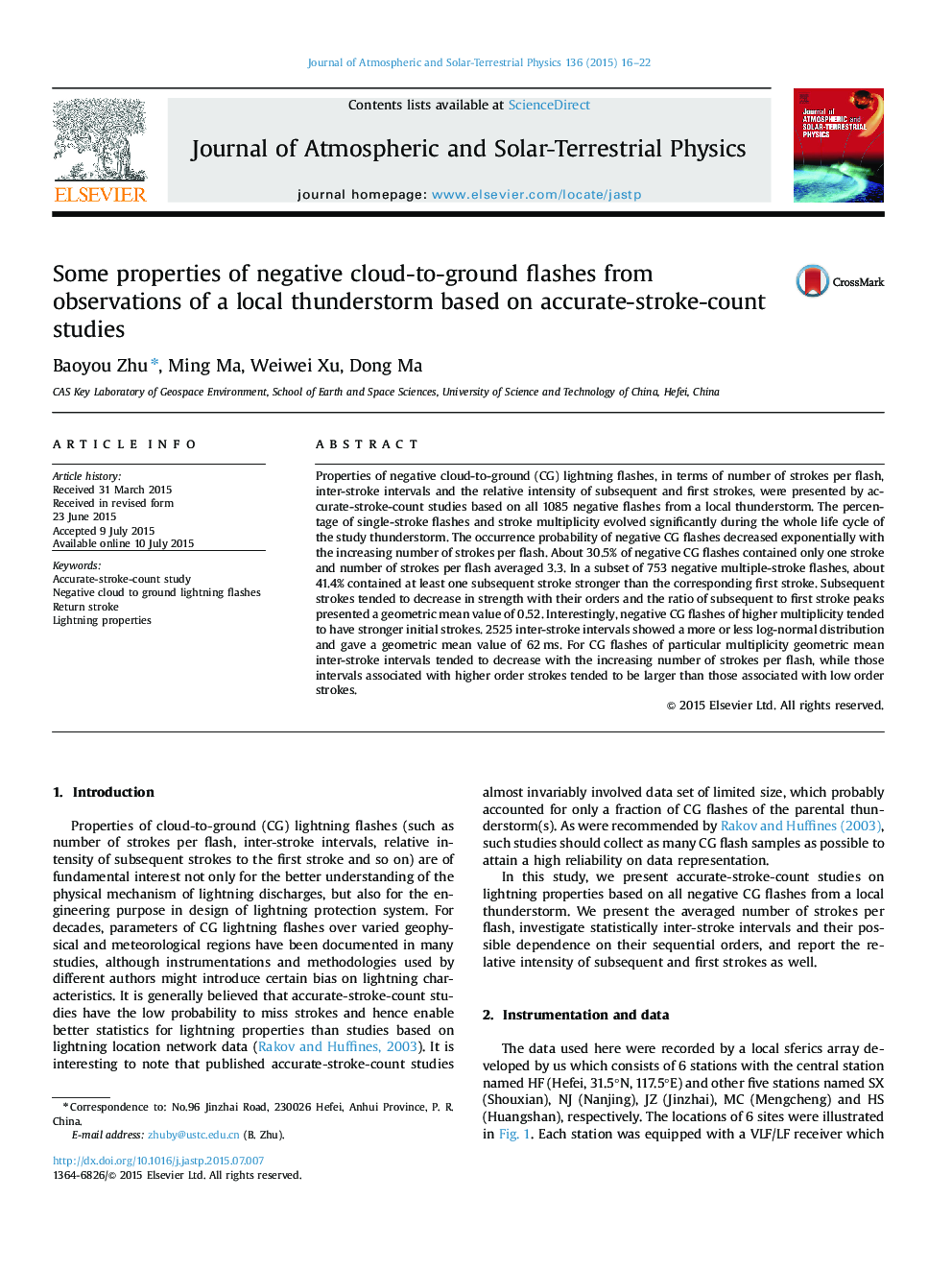| Article ID | Journal | Published Year | Pages | File Type |
|---|---|---|---|---|
| 1776289 | Journal of Atmospheric and Solar-Terrestrial Physics | 2015 | 7 Pages |
•Lightning properties were reported based on Accurate-stroke-count studies.•A large data set including all negative CG flashes of a local thunderstorm was used.•Possible dependence of lightning properties was examined.
Properties of negative cloud-to-ground (CG) lightning flashes, in terms of number of strokes per flash, inter-stroke intervals and the relative intensity of subsequent and first strokes, were presented by accurate-stroke-count studies based on all 1085 negative flashes from a local thunderstorm. The percentage of single-stroke flashes and stroke multiplicity evolved significantly during the whole life cycle of the study thunderstorm. The occurrence probability of negative CG flashes decreased exponentially with the increasing number of strokes per flash. About 30.5% of negative CG flashes contained only one stroke and number of strokes per flash averaged 3.3. In a subset of 753 negative multiple-stroke flashes, about 41.4% contained at least one subsequent stroke stronger than the corresponding first stroke. Subsequent strokes tended to decrease in strength with their orders and the ratio of subsequent to first stroke peaks presented a geometric mean value of 0.52. Interestingly, negative CG flashes of higher multiplicity tended to have stronger initial strokes. 2525 inter-stroke intervals showed a more or less log-normal distribution and gave a geometric mean value of 62 ms. For CG flashes of particular multiplicity geometric mean inter-stroke intervals tended to decrease with the increasing number of strokes per flash, while those intervals associated with higher order strokes tended to be larger than those associated with low order strokes.
